Many people feel confused when thinking about what color is a chameleon. These interesting reptiles seem to change their appearance right before our eyes, making it hard to pin down their true color.
The reality is both simpler and more amazing than most folks imagine. Chameleons do change colors, but not always for the reasons most think. Their color-changing abilities serve specific purposes in their lives.
This blog will explain what color is a chameleon, how chameleon coloration works, why these lizards change their hues, and which factors influence their color shifts.
Readers will gain a clear understanding of chameleon biology without any complex scientific terms. The truth about these color-changing creatures is more interesting than fiction!
Everything You Need to Know About Chameleons

Chameleons are unique reptiles known for their color-changing skin. These lizards live mostly in Africa, Madagascar, and parts of Asia. They have special cells in their skin called chromatophores that let them shift colors.
Contrary to popular belief, chameleons don’t change color to match their backgrounds. They change colors to control body temperature, communicate with other chameleons, and show their mood.
Most chameleons have rotating eyes that move independently, allowing them to look in two directions at once. They catch insects with their sticky, fast-moving tongues that can extend to twice their body length.
Chameleons prefer to live in trees and bushes. They need warmth and typically eat insects, though larger species might eat small birds or lizards.
How Do Chameleons Change Color?
Before learning about what color is a chameleon, let’s take a look out on how chameleons change their colors. The color-changing process in chameleons is both complex and interesting. Unlike what many people think, it’s not about matching backgrounds.
Instead, it involves special cells in their skin that respond to different stimuli like temperature, mood, and social situations. Here’s how this amazing process works:
- Special Skin Cells: Chameleons have several layers of specialized cells called chromatophores in their skin that contain different pigments.
- Different Cell Types: They have xanthophores (yellow), erythrophores (red), melanophores (brown/black), and guanophores (blue) that work together to create color changes.
- Physical Process: When chameleons change color, they’re not creating new pigments but rather expanding or contracting these existing cells to show different combinations.
- Crystal Lattices: Some chameleon species have special crystal-like structures that reflect light in different ways, creating blues and greens through structural color rather than pigments.
- Speed of Change: Color changes can happen quickly, sometimes in just a few minutes, depending on the stimulus and the chameleon species.
- Brain Control: The color change process is controlled by the chameleon’s nervous system and hormones, which respond to environmental factors and emotional states.
- Limited Palette: Each chameleon species has a specific range of colors they can display, determined by their genetic makeup. No chameleon can show every color of the rainbow.
Understanding: What Color Is a Chameleon?
Chameleons are famous for their color-changing skills. Many people think they change to match their surroundings, but their color shifts mainly happen for communication and temperature control. Let’s look at the main chameleon colors and what they mean.
The following is your answer to what color a chameleon is.
1. Green Chameleon Color
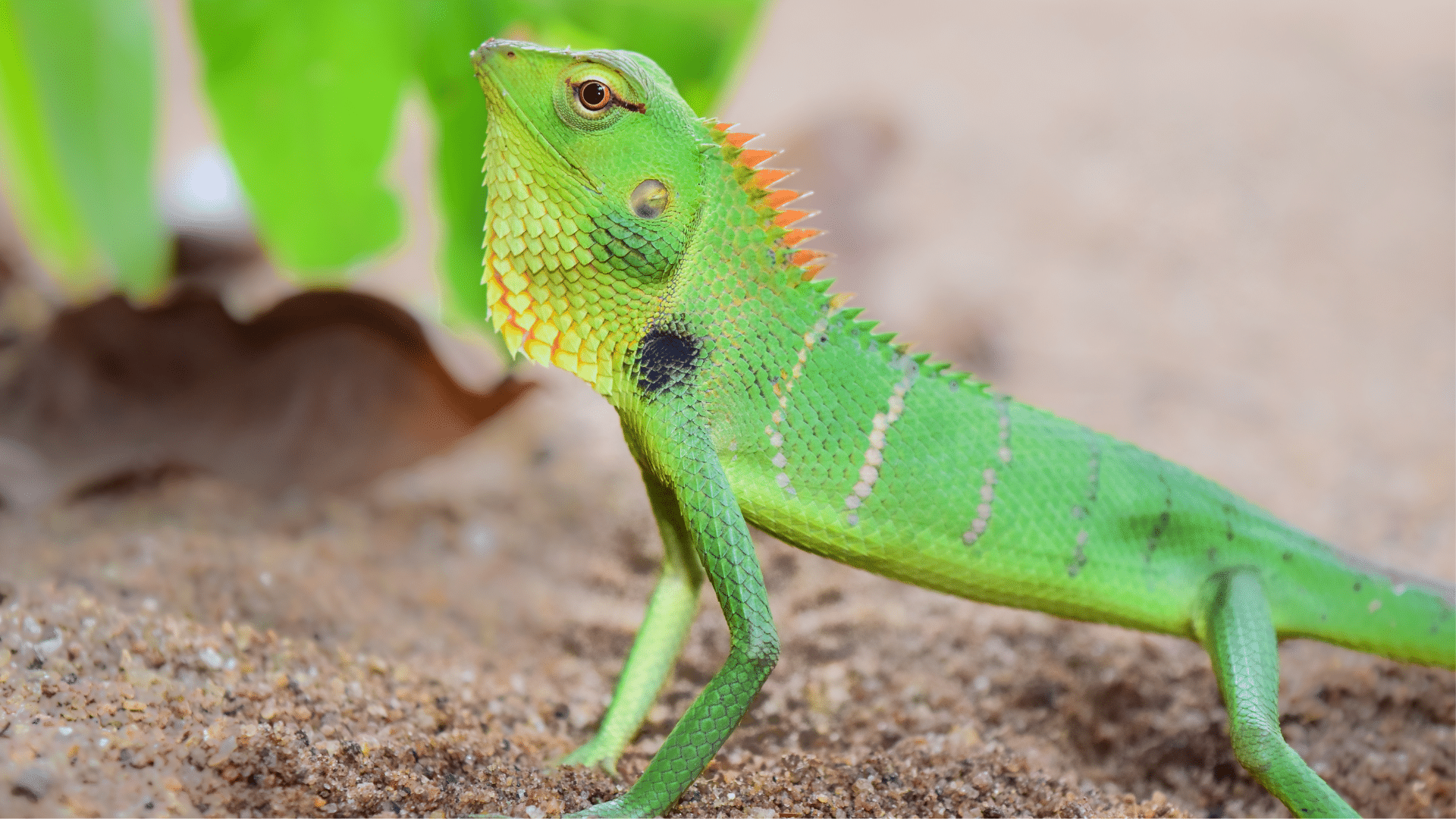
Green is the most common chameleon color. This natural shade helps them blend with leaves and plants in their tree habitats. Green indicates a calm, healthy chameleon in a comfortable environment.
When you see a green chameleon, it’s usually relaxed and content with its surroundings.
- Mechanism of Color Change: Special cells called chromatophores expand or contract to reflect different light wavelengths.
- Reasons for Color Change: Camouflage, temperature regulation, and communication with other chameleons.
- Health and Stress: Bright, bright green often indicates good health and low stress levels.
- Reproductive State: Males may display brighter green hues when seeking mates.
2. Brown Chameleon Color
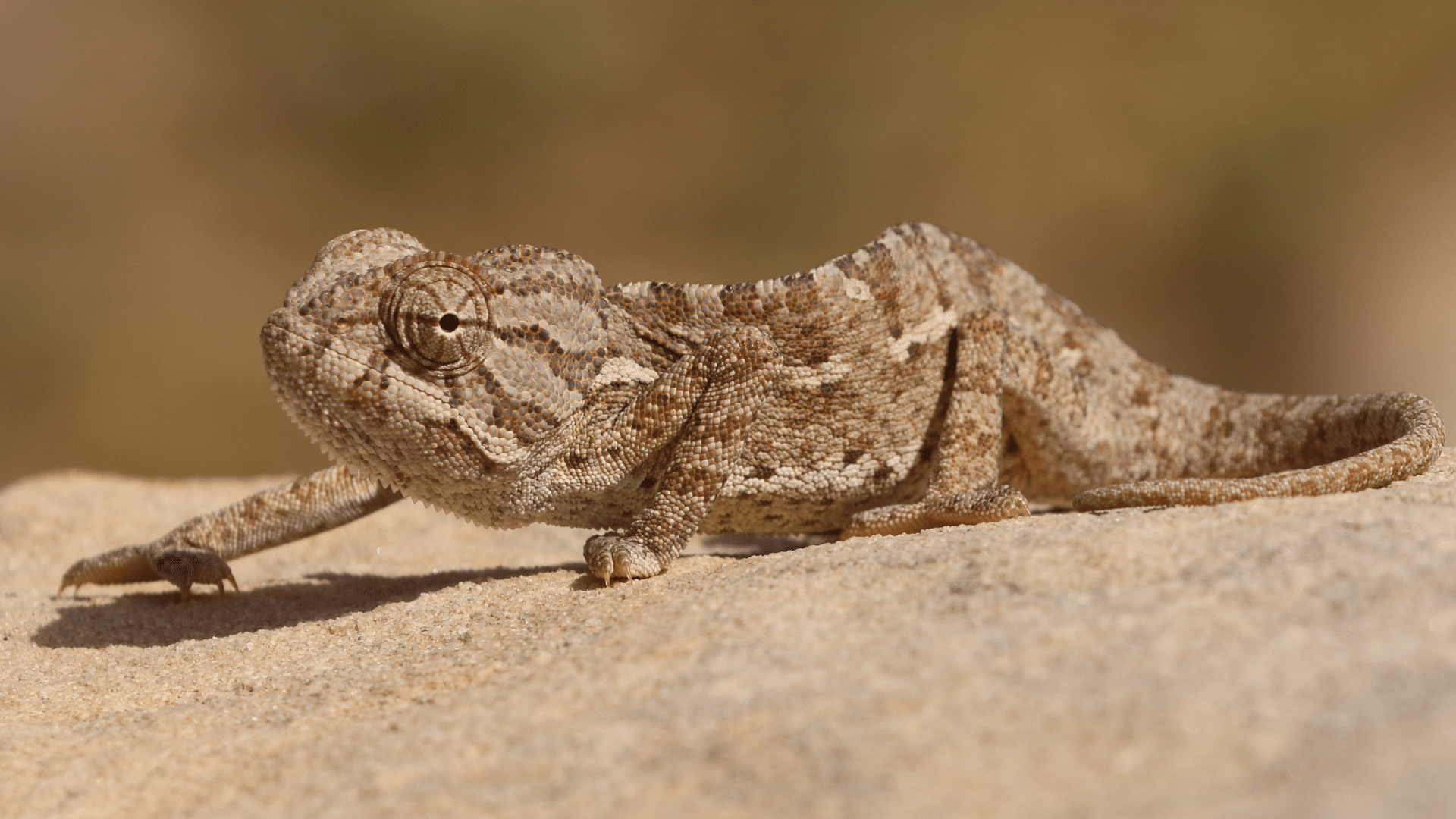
Brown coloration appears when chameleons want to absorb more heat or when they’re moving between different environments.
This earthy tone helps them warm up in cooler conditions and provides camouflage in woody or dry areas of their habitat.
- Mechanism of Color Change: Melanophores (brown pigment cells) expand to create darker colors.
- Reasons for Color Change: Usually related to temperature control or moving to areas with less greenery.
- Health and Stress: Prolonged brown color might indicate mild temperature stress.
- Reproductive State: Not typically associated with reproductive behaviors.
3. Yellow/Orange Chameleon Color

Yellow and orange shades show excitement or alert status in chameleons.
These bright colors often appear when chameleons interact with others, especially during social encounters. They signal attention and engagement with their environment.
- Mechanism of Color Change: Xanthophores (yellow pigment cells) become more visible.
- Reasons for Color Change: Social interactions, territorial displays, or mating signals.
- Health and Stress: Can indicate excitement, but not necessarily stress.
- Reproductive State: Males display these colors more frequently during mating season.
4. Black/Dark Chameleon Color
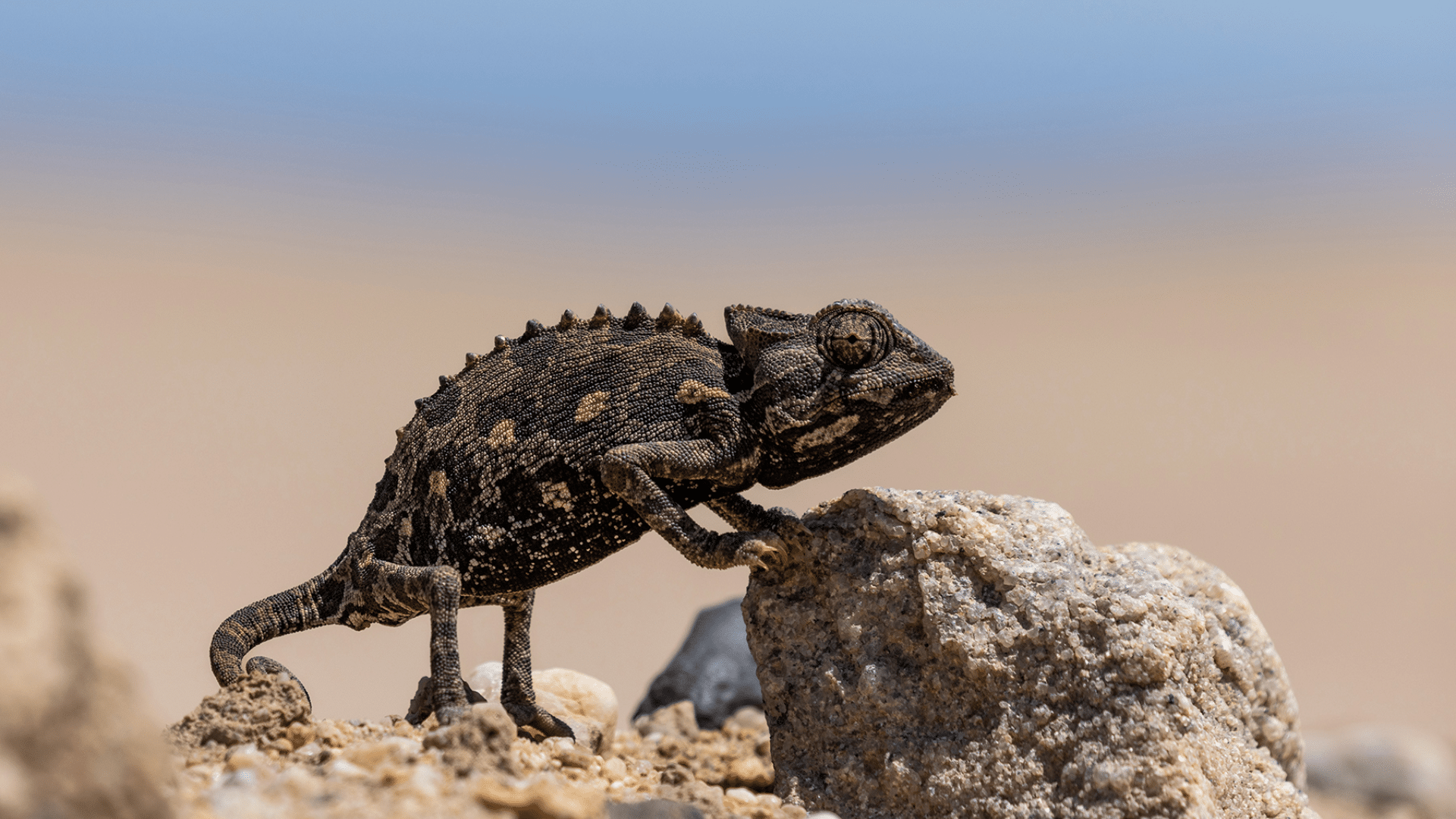
Dark colors in chameleons often signal stress, aggression, or submission. Black patches or overall darkening can appear when the chameleon feels threatened or wants to appear larger to scare off rivals or predators.
- Mechanism of Color Change: Maximum expansion of melanophores creates dark patches or overall blackening.
- Reasons for Color Change: Defense, aggression, stress, or cooling down body temperature.
- Health and Stress: Strong indicator of high stress or agitation.
- Reproductive State: Males may show dark colors during territorial disputes over mates.
5. Blue Chameleon Color
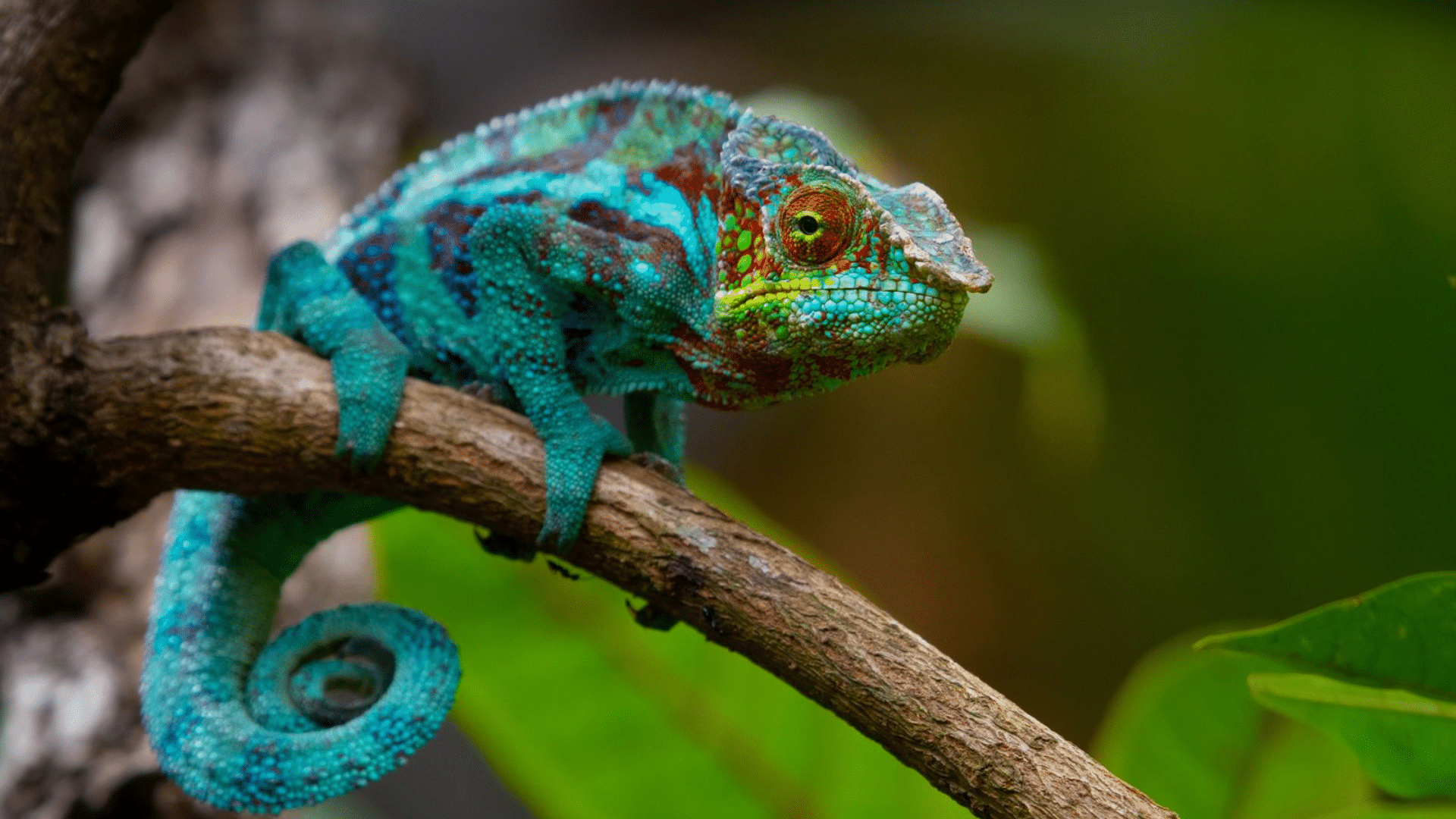
Blue is a less common but striking chameleon color.
When chameleons display blue, it often shows they’re ready to mate or are feeling territorial. This cool-toned color helps males stand out to females or warn other males to stay away.
- Mechanism of Color Change: Specialized reflecting layers beneath chromatophores create blue through light scattering.
- Reasons for Color Change: Primarily for mating displays and establishing territory boundaries.
- Health and Stress: Not directly linked to stress but can indicate heightened alertness.
- Reproductive State: Strong indicator of breeding readiness, especially in males.
6. Red Chameleon Color
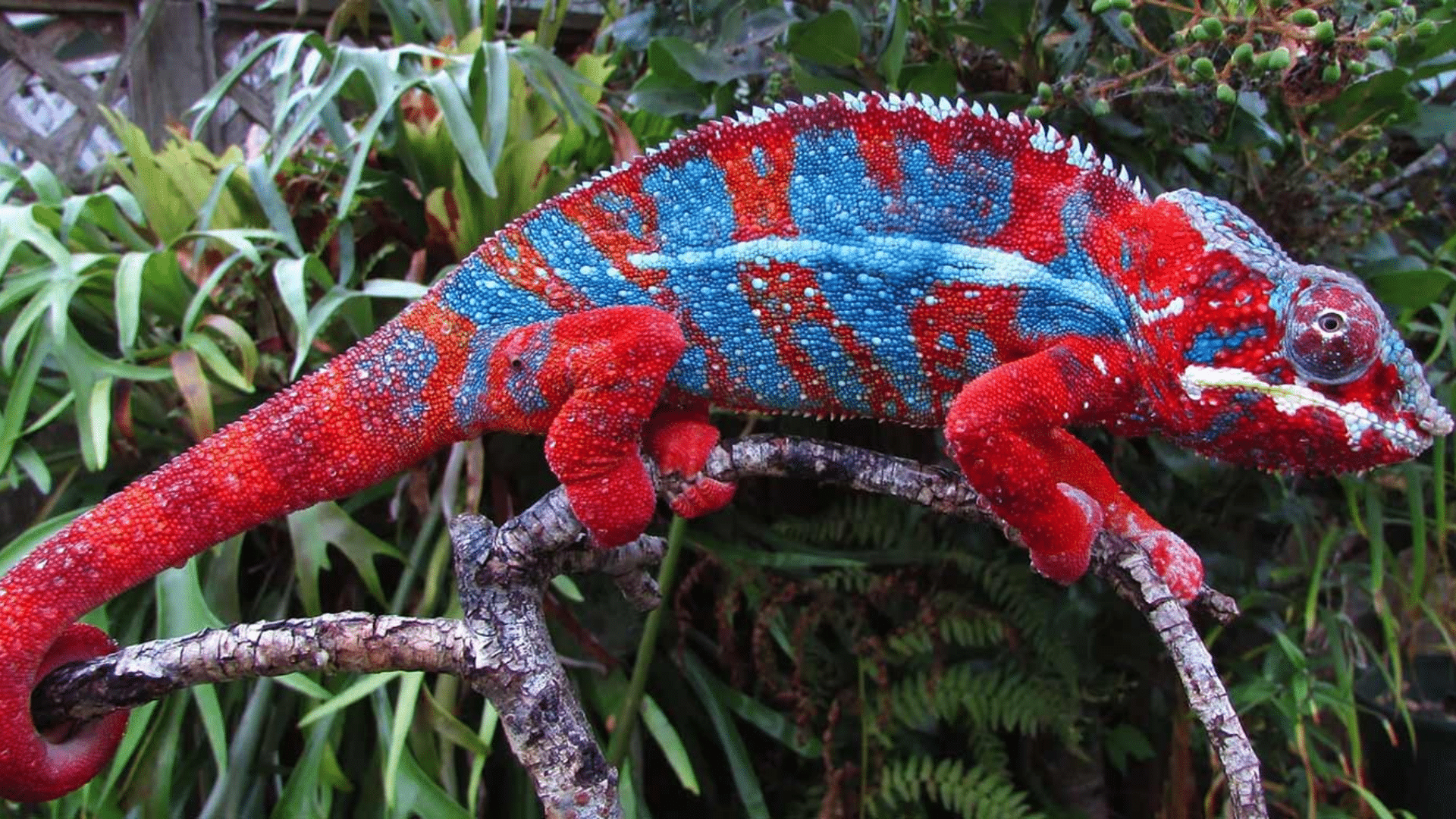
Red coloration signals high alertness or aggression in chameleons. This bright warning color tells other animals to back off. When a chameleon turns red, it’s communicating strong emotions or preparing for confrontation.
- Mechanism of Color Change: Erythrophores (red pigment cells) become highly visible.
- Reasons for Color Change: Defense, aggressive displays, and extreme territorial behavior.
- Health and Stress: Can indicate high stress levels or preparation for conflict.
- Reproductive State: Males show red during intense competition for females.
7. White/Pale Chameleon Color

White or very pale colors in chameleons often signal submission or fear. This lighter coloration may help them reflect heat in very hot conditions or show other chameleons they aren’t a threat during social interactions.
- Mechanism of Color Change: Contraction of darker pigment cells reveals underlying white tissue.
- Reasons for Color Change: Submission, fear response, or heat reflection.
- Health and Stress: Can indicate extreme stress, illness, or overheating.
- Reproductive State: Females sometimes display paler colors to reject male advances.
Interesting Facts About Chameleons

Now that we have the answer to the question, what color is a chameleon?
Let’s learn a few facts about them. Chameleons are some of the most fascinating lizards on the planet. While we’ve focused on their color-changing abilities, there’s much more that makes these reptiles special.
Here are some surprising facts about chameleons that might amaze you.
1. Independent Eye Movement
Chameleons can move each eye in different directions at the same time. This gives them a 360-degree field of vision without turning their heads, allowing them to watch for predators and prey simultaneously.
2. Ultraviolet Vision
These lizards can see in the ultraviolet spectrum, which humans cannot. This special vision helps them find flowering plants and detect other chameleons, as many species have patterns that reflect UV light.
3. Sticky Tongues
A chameleon’s tongue can be up to twice its body length and can shoot out to catch prey in less than 0.07 seconds. The tip has a muscular suction cup that sticks to their prey.
4. No Ears
Chameleons don’t have ears or ear holes like other reptiles. They can detect sound vibrations but have very limited hearing compared to most animals.
5. Zygodactyl Feet
Their feet are split into two bundles of fused digits, two on one side and three on the other, creating a grip like tongs that helps them hold onto branches securely.
6. Long Lifespans
Depending on the species, chameleons can live between 3-10 years in the wild, with some larger species living even longer when properly cared for in captivity.
7. Prehensile Tails
Many chameleon species have tails that can grasp objects like a fifth limb, helping them climb and maintain balance on narrow branches and twigs.
8. Bone Glow
Under UV light, the bones of some chameleon species actually glow blue, creating patterns visible through their skin. Scientists believe this may play a role in mate selection.
The Bottom Line
Chameleons show us how amazing nature can be through their color-changing abilities. We’ve seen that these shifts aren’t just for hiding, but are complex biological processes that help chameleons communicate, regulate temperature, and express their emotional states.
From greens to blues, reds to browns, each color serves a purpose in the chameleon’s life. Their special skin cells work together to create these colorations, making each chameleon a living canvas that tells us about its health, mood, and surroundings.
Next time you see a chameleon changing colors, you don’t need to think about what color a chameleon is, you’ll know it’s not just trying to blend in, it’s actually expressing itself in its own unique language.
These interesting reptiles remind us that there’s often more to animals than meets the eye, and sometimes the most colorful truths are the most surprising.


















